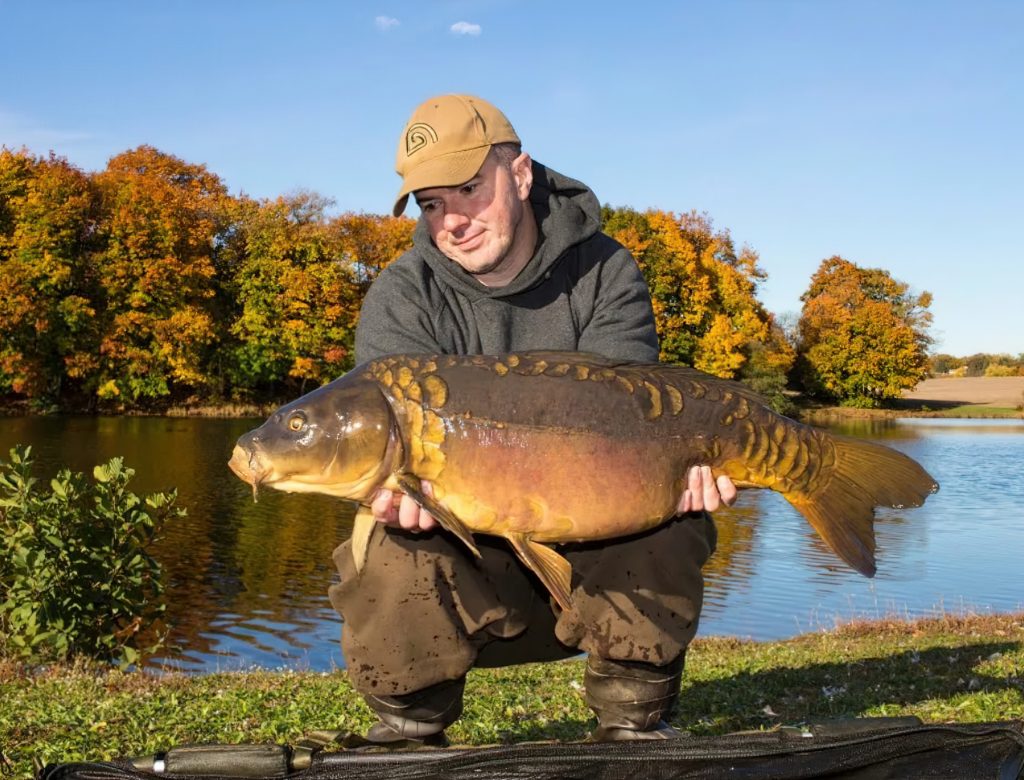Fall carp fishing can be one of the most rewarding experiences for anglers, as the pre-spawn period offers the opportunity to catch big and active carp. This article will provide insights into carp behavior during the fall and offer tips for choosing the right location, selecting the best gear and bait, and avoiding common mistakes.
Understanding Carp Behavior in the Fall
Carp are cold-blooded creatures and their behavior is largely dictated by water temperature and light conditions. In the fall, as water temperatures begin to drop, carp will begin to feed more heavily in order to store up energy for the coming winter months. Understanding this feeding behavior is crucial for successful fall carp fishing. Additionally, carp will begin to move to shallower waters as the water temperature drops, so anglers should adjust their fishing locations accordingly.
In response to changing light conditions, carp may also change their feeding habits during the fall. For example, carp may be more active during low light conditions such as early morning or late evening, and less active during the brightest part of the day. Anglers should take this into account when planning their fishing trips and adjust their tactics accordingly.
Fall carp fishing requires careful consideration of the fishing location. Carp may be found in deeper waters or near underwater structures, so anglers should pay close attention to the water depth and structure of the fishing spot. Understanding the direction and strength of currents can also be helpful in selecting the best fishing location.
Choosing the Right Location
Finding the right location is critical for successful fall carp fishing. Factors to consider include water depth, structure, and currents. Look for areas with steep drop-offs, submerged weed beds, or gravel bars, which are often prime feeding areas for carp. Additionally, consider the direction of the current and how it will affect the placement of your bait.
Best Techniques for Fall Carp Fishing
As water temperatures start to drop in the fall, carp begin to feed more aggressively in preparation for the upcoming winter months. Anglers can take advantage of this feeding frenzy by using the right techniques to catch big carp during the pre-spawn period.
One of the most effective techniques for fall carp fishing is using a variety of baits. Carp are omnivorous and will eat a wide range of natural and artificial baits, so it’s important to experiment with different options to see what works best in your local waters.
Common baits include corn, boilies, and pellets.
When it comes to gear, carp anglers typically use larger and stronger equipment than other types of freshwater fishing. This includes sturdy rods, reels, and line, as well as bite alarms to help detect when a fish is on the line. For presentation, using a hair rig with a baited hook can help ensure that carp take the bait properly and get hooked.
Another important technique for fall carp fishing is finding the right location. Look for areas with deeper water and structure such as rocks, weeds, and fallen trees. Carp are also attracted to current, so areas near river mouths or inlet pipes can be productive. It’s also important to pay attention to water temperature and light conditions, as carp tend to feed more actively during the warmest parts of the day.
Common Mistakes to Avoid
One of the most common mistakes in fall carp fishing is using baits that are not suitable for the season. During this time, carp may be less interested in sweet or fruity flavors and may prefer more protein-rich baits. Another mistake is not paying attention to the presentation of your bait. Adjusting the depth and distance of your bait from the shore can be crucial for attracting carp. Finally, always make sure to use appropriate gear and line strength, as carp can put up a significant fight.
Landing and Handling Carp
Properly landing and handling carp is important for both the safety of the fish and the angler. When landing the fish, avoid using a net with small or knotless mesh, which can damage the fish’s protective slime layer. Once landed, gently remove the hook with pliers and release the fish quickly and carefully back into the water.
Conclusion
Fall carp fishing can be a challenging but rewarding experience for anglers. By understanding carp behavior, choosing the right location, and using the right techniques and gear, anglers can increase their chances of catching big carp during the pre-spawn period. Avoiding common mistakes and properly handling fish is also crucial for a successful and responsible fishing season.

